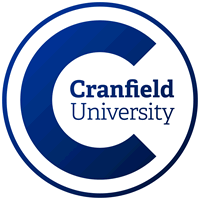About the Project
Background
Active Debris Removal (ADR) is a concept born from the need to protect the Earth’s orbital environment, whose sustainability is today compromised due to a rapid growth of spacecraft in orbit. Most of the current research on ADR concerns spacecraft concepts and physical mechanisms conceived to de-orbit debris; the designs of which are often tailored to the type of debris to be removed (e.g., launcher upper-stages, inoperative satellites, etc). However, the profitability of ADR missions is low, since aiming for a few specific targets makes the development expensive and hard to scale. To tackle the removal of debris from a more cost-competitive perspective, a large number of debris should be removed within one single mission, and without requiring costly architectures or excessive wet masses.
Highly efficient trajectory solutions become therefore paramount for the feasibility of ADR missions. For such solutions to be readily found, research on efficient heuristics and judicious utilization of the subtle features of Earth’s orbital environment are key aspects.
Objectives
The design of trajectories to rendezvous with multiple debris is a NP-Hard combinatorial optimisation problem. An analogue problem is the well-known Travelling Salesman Problem (TSP), on which a salesman must find the optimal itinerary to visit a number of cities. However, note that, for the ADR problem (or any type of on-orbit servicing), the cities are non-stationary, and thus the dynamics of the problem play an important role. Perturbations such as the Earth’s non-spherical shape, atmospheric drag or solar radiation pressure define a highly complex solution landscape. Improving the state-of-the-art algorithms, as well as taking advantage from the perturbed dynamics, are two fundamental steps to produce standard and scalable design procedures that can guarantee higher investment returns: the latter clearly necessary in the evermore competitive market of Space 4.0.
This project will thus not simply tackle a purely academic exercise, but instead will:
• Produce a comprehensive literature review on ADR, and discuss its finding with the industry partner, in order to define a relevant and realistic mathematical optimization problem for near to mid-term ADR missions.
• Improve on fast and reliable astrodynamic tools to compute trajectories, both impulsive and low-thrust, subject to all relevant perturbation effects.
• Produce a robust and flexible optimization tool to tackle the highly non-linear mixed integer optimization problem of ADR mission design.
• Provide optimal solutions for ADR campaigns targeting to remove multiple debris, among a specific set.
This project is co-sponsored by Cranfield University and Airbus Defence and Space Ltd.
Funding Notes
Sponsored by Cranfield Industrial Partnership Programme, this studentship will provide a bursary of up to £17,500 (tax free) plus fees* for three years.

 Continue with Facebook
Continue with Facebook

